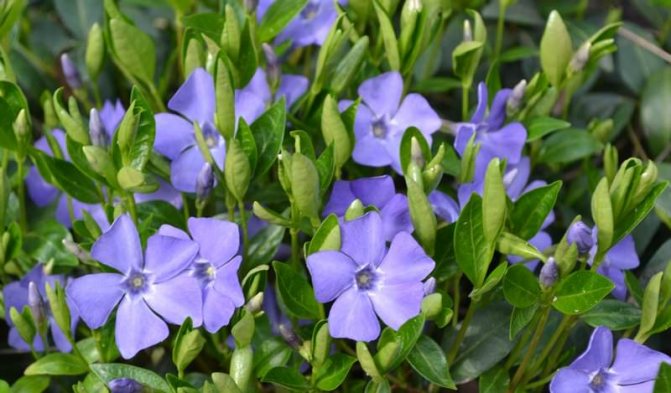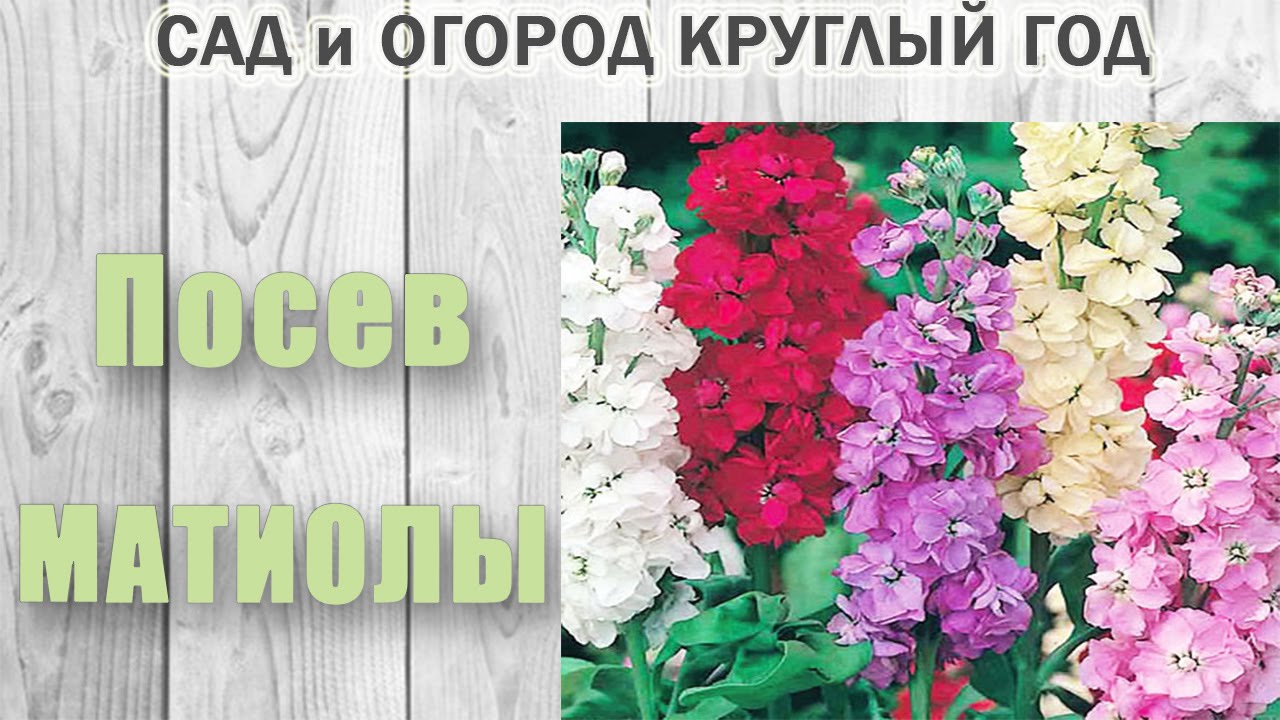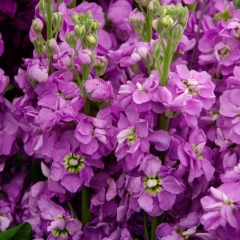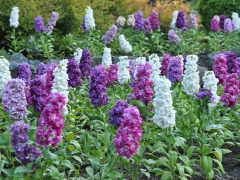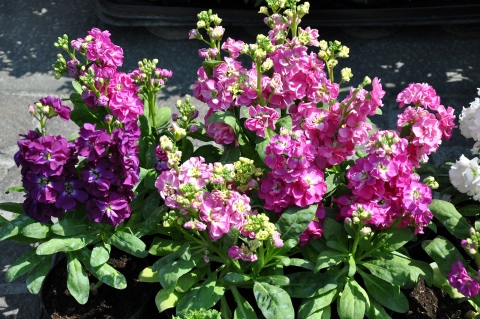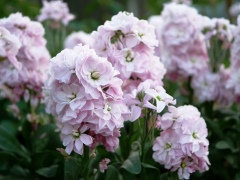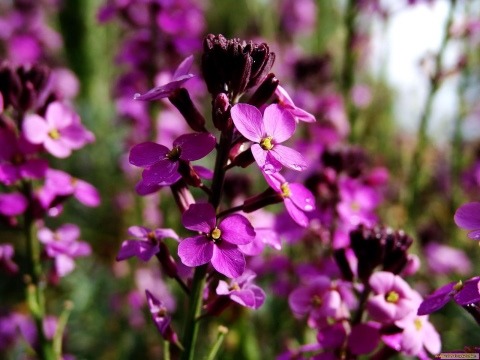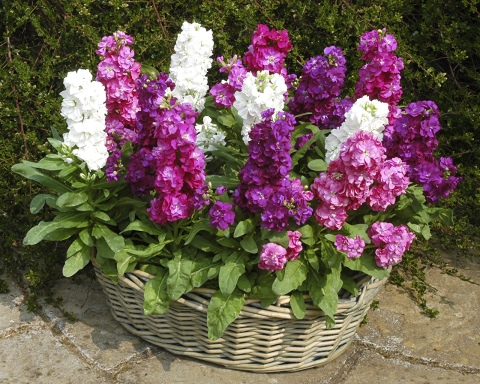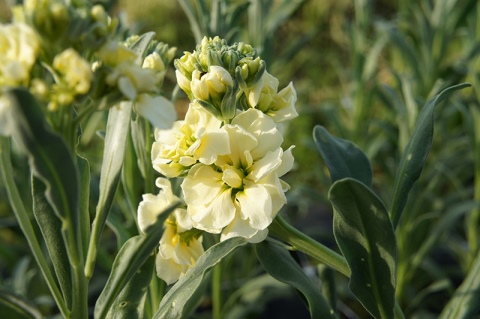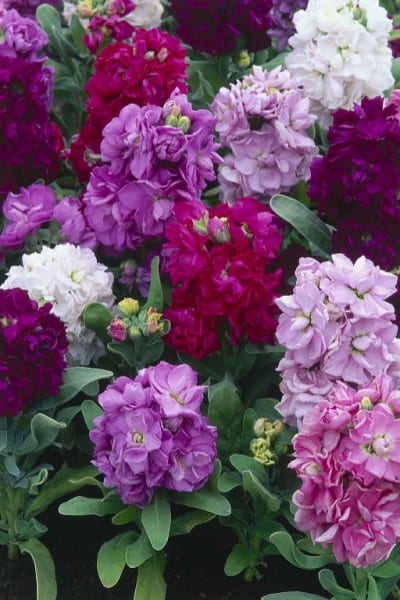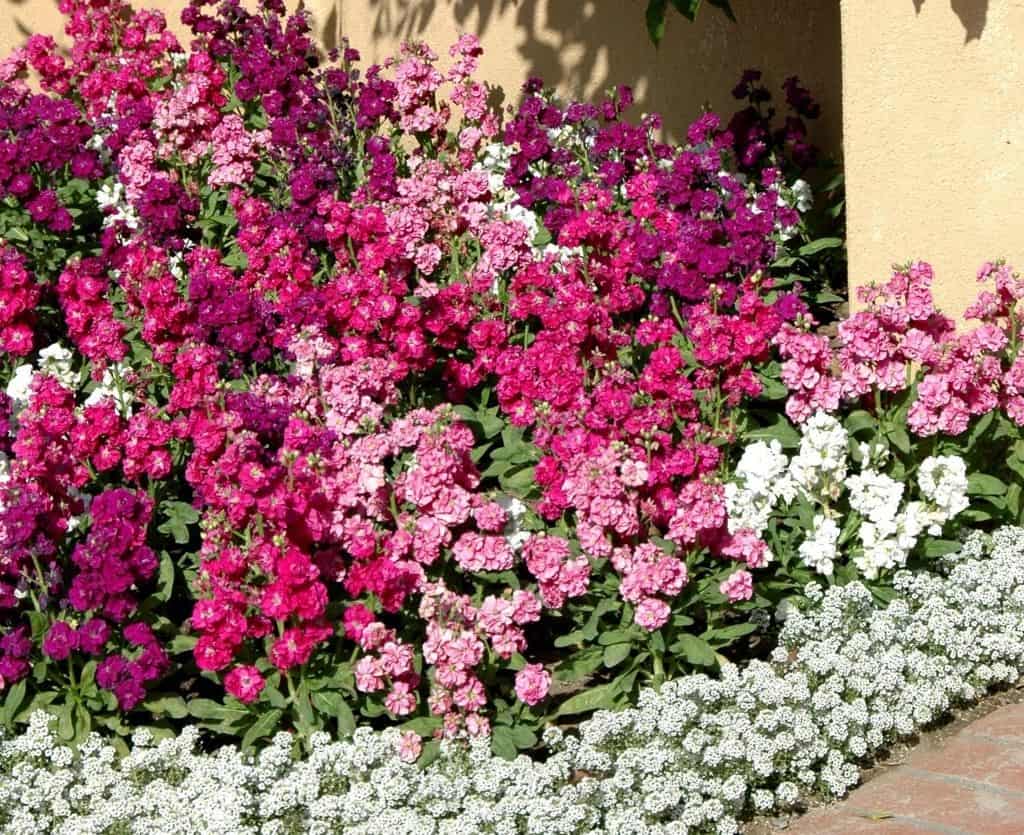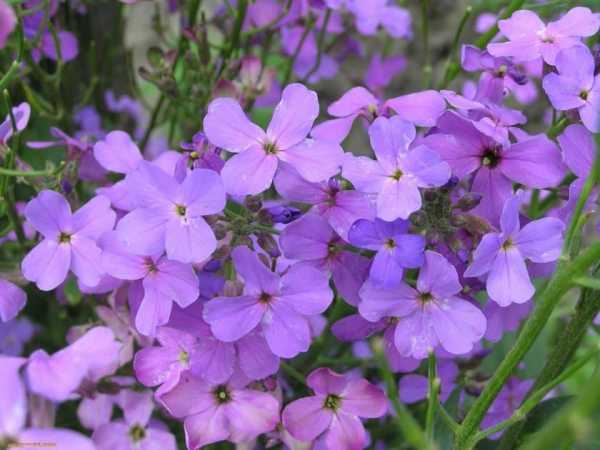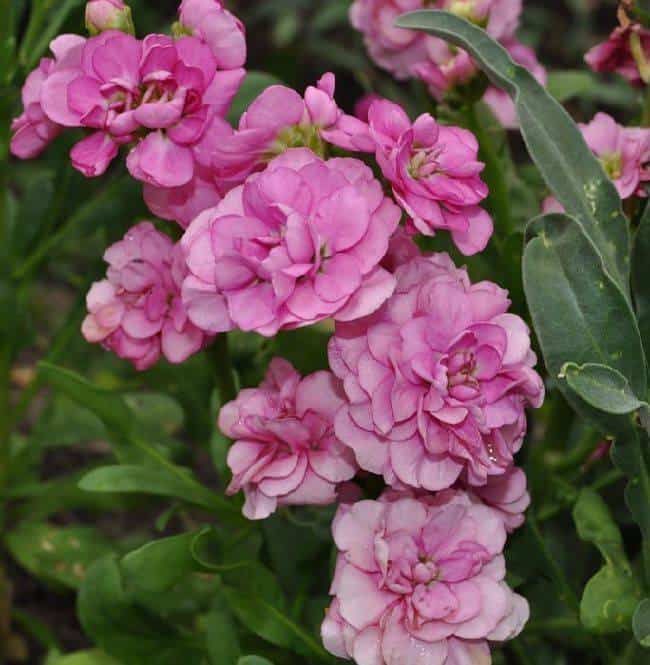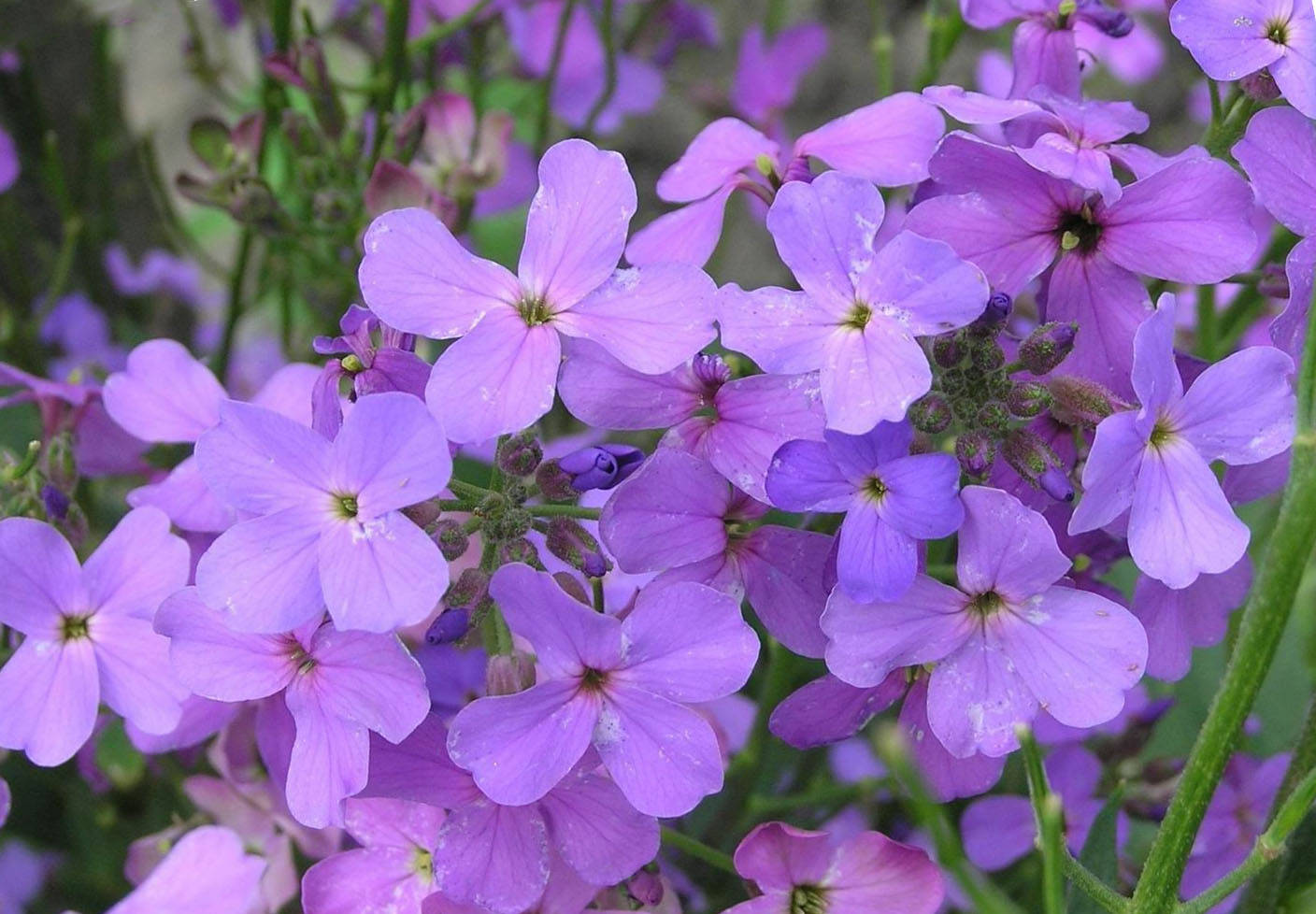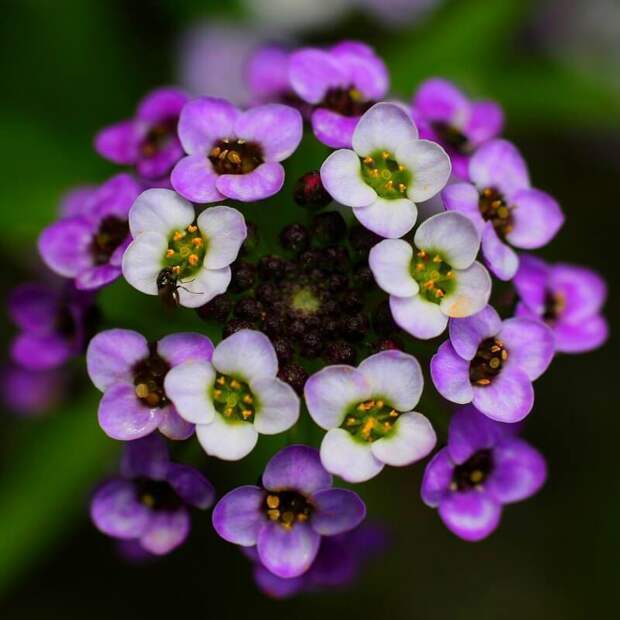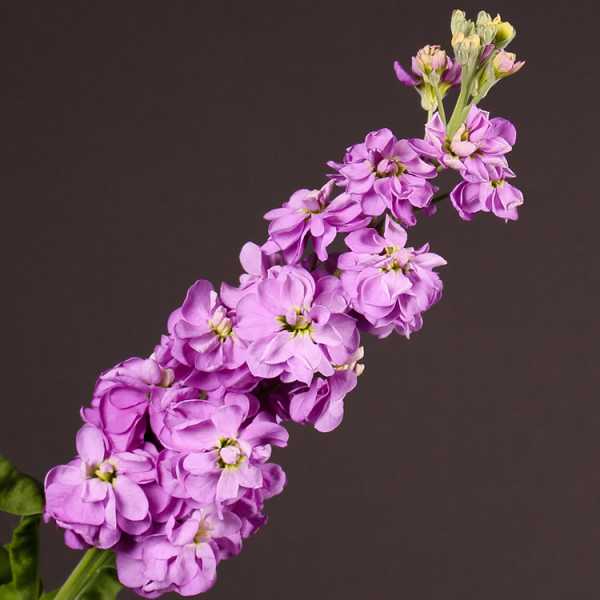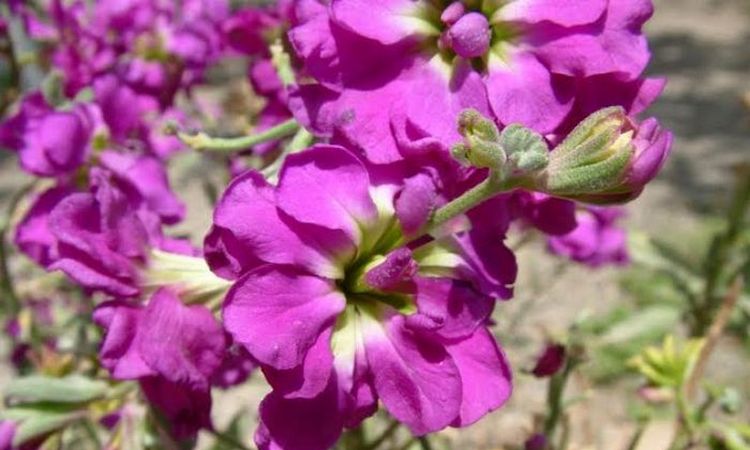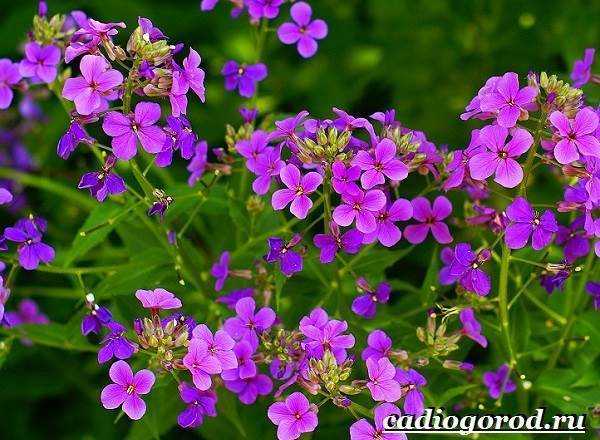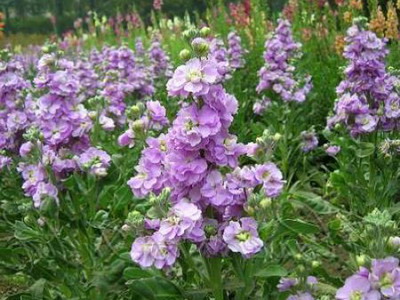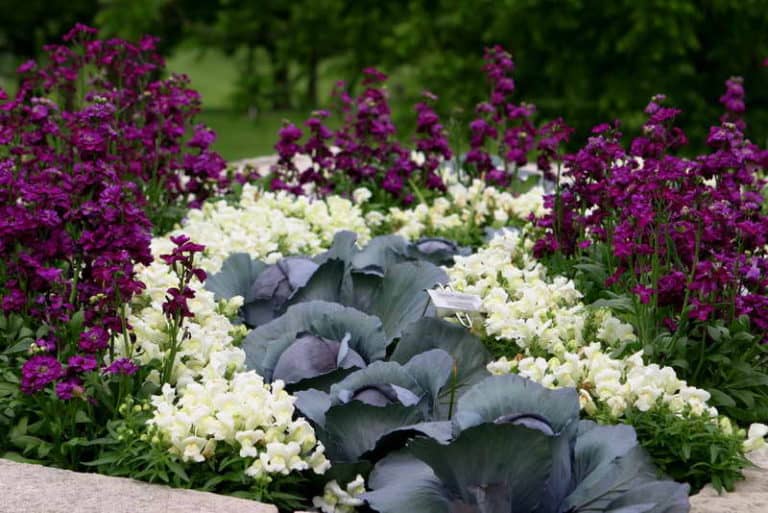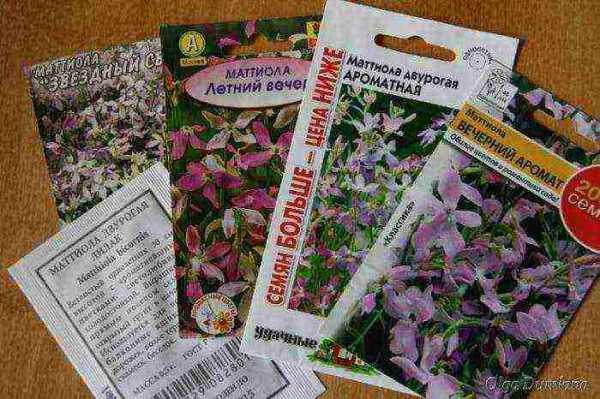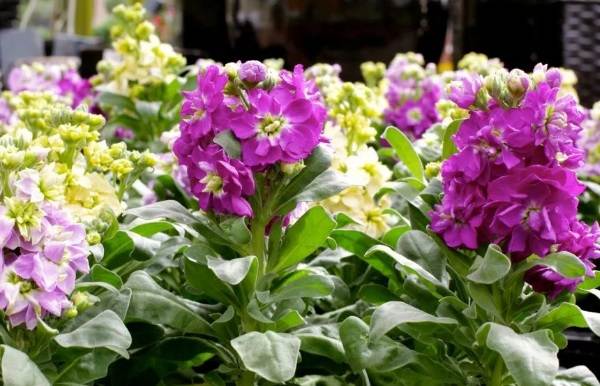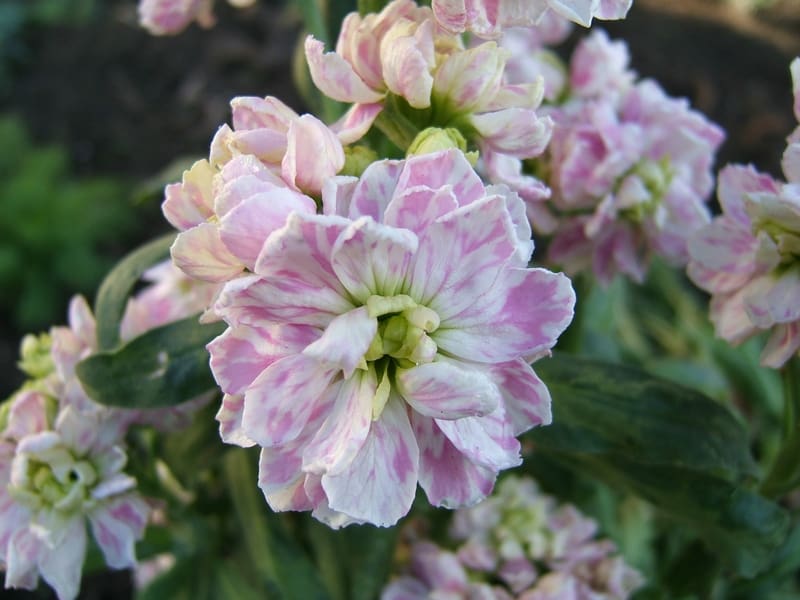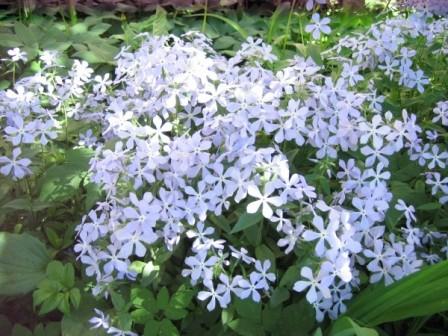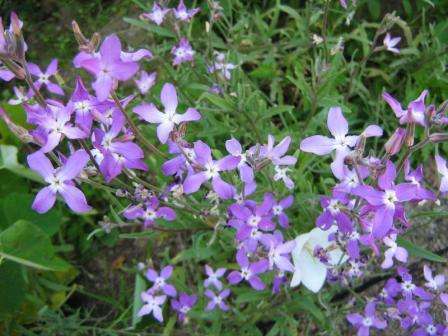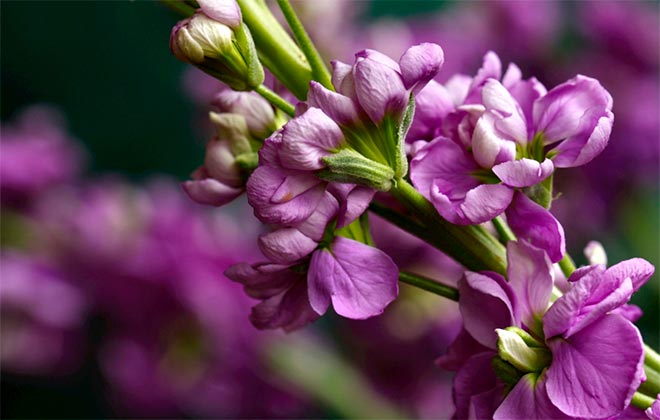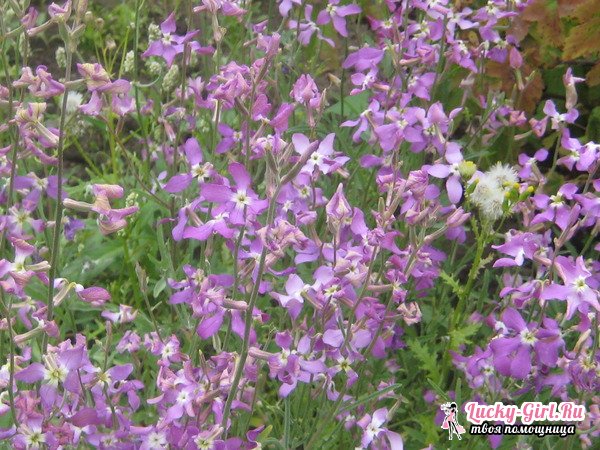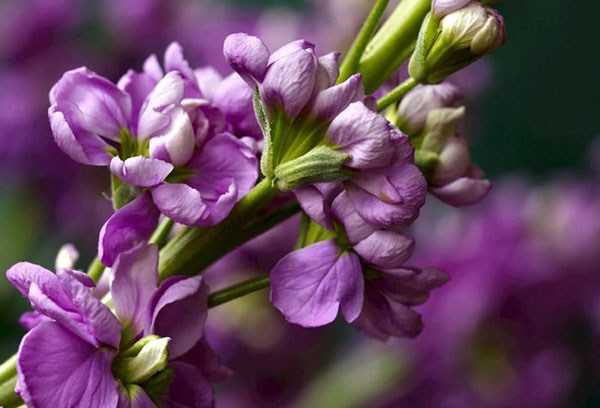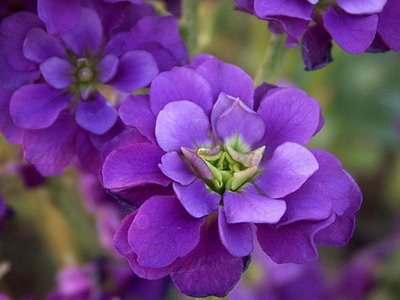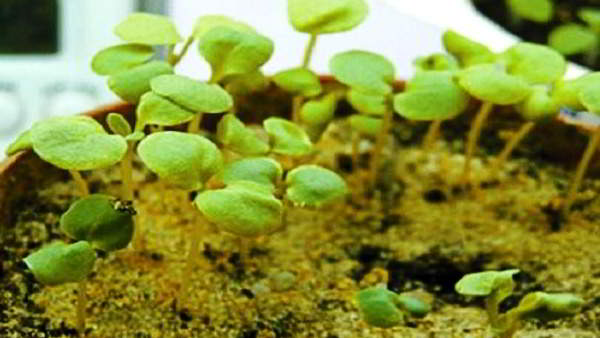How to take care of it properly?
Growing pansies is not difficult. All they need is fertile soil with good drainage and a place open to sunlight. Regardless of the characteristics of the climate, the earth must have high indicators of water resistance, as in the conditions waterlogging the soil, the plant gets sick with root rot. If you have doubts about the quality of the soil, plant your tricolor violets in a high bed.
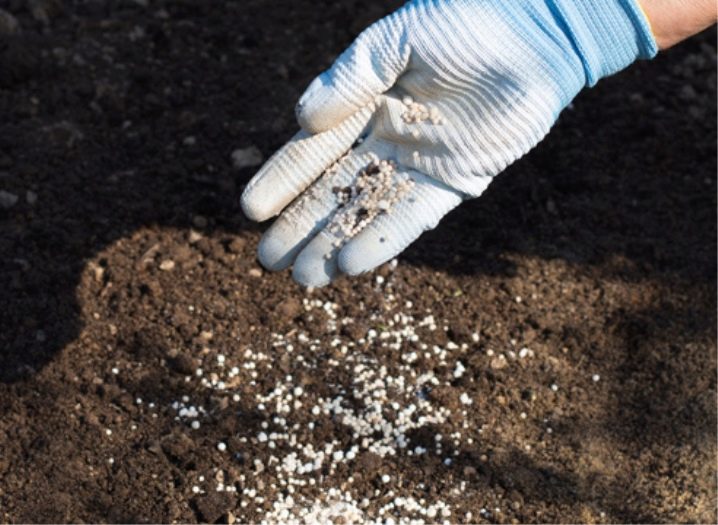
If you want your tricolor violets to bloom as long as possible, you need to remove all wilted flowers in a timely manner, and with the advent of cold weather, mulch the beds - the roots of the violets are shallow, therefore artificial warming of the earth will help prolong the period of budding and flowering. It will not be superfluous to cut off all the seed boxes in August - then the plant will delight you with its exuberant color until the onset of severe cold weather.
If you planted viols in September-October, then they need to be preserved in the winter. To do this, create a high bed near a wall or other vertical structure.
It is very important during this period to exclude the harmful effects of wind and high humidity - they can destroy the wintering flower. Planting should be carried out a month before the onset of frost, otherwise the roots simply will not be able to adapt
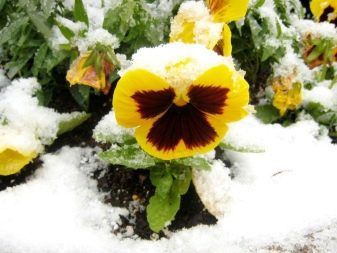
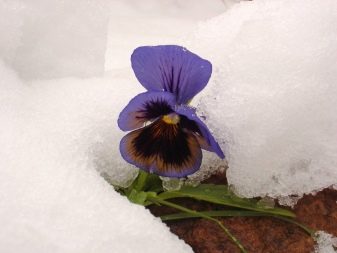
The snow cover is a very good shelter for pansies, but if the winter has little snow and cold, then you need to cover the beds with coniferous branches or spruce branches.
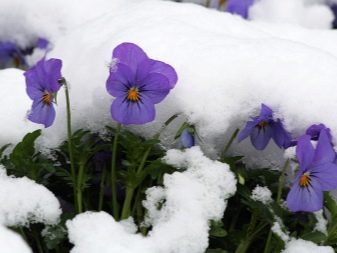
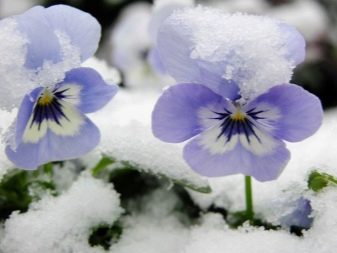
Growing Matthiola from Seeds When to Plant

Mattiola seeds photo
Sowing seeds in the ground
Sowing seeds is the main breeding method.
- You can sow in open ground before winter (November)
- or in spring (April).
Select an open, sunny area, make shallow grooves up to 5 cm, evenly distribute the seeds (it is recommended to mix them with sand beforehand to sow less often). The distance between the rows is 20-25 cm.
Moisten the soil if sowing in spring. When 3 true leaves appear on young plants, thin out, leaving the most viable shoots at a distance of 15-20 cm.
Growing seedlings
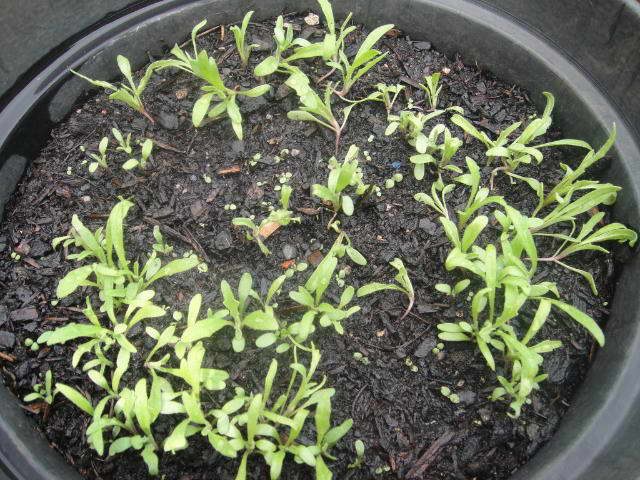
Mattiola from seeds photo of seedlings
To obtain an earlier flowering, seedlings are grown in June. Sowing is carried out with the onset of March.
- Take a box with a mixture of turf and sand.
- It is better to process the seeds for half an hour in a manganese solution, rinse well and dry until flowable.
- The seeding depth is about 5 mm, sow less often. You can scatter seeds over the surface of the soil and sprinkle them with earth.
- Moisten crops from a spray bottle, cover with a bag and germinate in a well-lit place with an air temperature of 10-12 ° C.
- Seedlings will appear quickly: after 3-4 days, remove the bag.
- After a couple of weeks, plant the seedlings in separate containers (small pots or plastic cups). Grow until mid-April.
- Before planting, harden: a week before planting in open ground, take it out for several hours daily in the garden.
- By the end of April, it can be planted in open ground. Matthiola is quite viable and can withstand short return frosts down to -5 ° C.
Levkoy characteristics
We recommend that you familiarize yourself
In total, more than 50 species of levkoy are known, and all of them are from the cruciferous family. In the conditions of central Russia, an annual flower is mainly cultivated, while a perennial flower is not used in these climatic latitudes, since the plant dies due to cold winters and low temperatures. In home floriculture, most often you can find only two types:
- 1 Mattiola two-horned, or "night violet", which has inconspicuous small flowers, creeping stems and curly leaves. It is quite cold-resistant, therefore it is capable of sprouting through direct sowing into the soil. Most often, Matthiola two-horned is sown near the gazebos, along the paths in order to enjoy the aroma of expensive perfume that it exudes in cloudy weather and at night.
- 2 Levkoy, which, in contrast to the "night violet", has mainly one branching stem up to 80 cm high, picturesque large double flowers of various shades. It has a bright, but not so strong aroma. In the people it is still called "fragrant levkoy". This beautiful plant boasts a huge number of species - more than 600. Levkoy gray-haired blooms 75-105 days after germination and has different terms and duration of flowering. Due to its decorativeness, the flower levkoy does not leave anyone indifferent, therefore it is widely used in landscape gardening of areas as part of rabatki and in bowls, and also goes for cutting into bouquets. Terry levkoe seeds are sterile, so you shouldn't try to collect them. Their offspring can be obtained only by breeding through crossing non-double forms with levka or by cuttings of terry ones. Therefore, you need to purchase them only in specialized departments of stores.
How to sow seeds: step by step instructions
Sowing seeds is carried out no later than the beginning of March. You need to prepare for this work in advance. Actions should be performed in the following order:
- Preparation of containers. For sowing seeds, take containers with holes to remove excess water.
- Preparation of a soil mixture, which must be moisture and air permeable. It is necessary to prepare the soil substrate by mixing turf soil with sand in a 3: 1 ratio. Neither humus, nor compost, nor other organic matter should be added to this mixture. If a ready-made soil is purchased, it is recommended to add sand to it in order to exclude excessive compaction of the earth. Nevertheless, the risk of death of seedlings from the black leg remains. For insurance, the finished substrate should be poured with a solution of potassium permanganate, and then dried.
Seed stratification is optional, but this technique will increase seed germination and accelerate their germination:
- Put the seeds in a flat dish covered with a napkin, cover with water, cover slightly, and leave for a day.
- After swelling, the seeds wrapped in a moistened napkin should be placed in the refrigerator on the lower shelf, where the temperature is from 2 to 5 ° C. Stratification should take several days to a week.
- Finished seeds should be sown in moistened soil, deepening by half a centimeter and placing the seeds at a distance of 3 cm.
- There is no need to water. Cover the container with crops with glass or foil and arrange in a warm place, where the temperature is 20-22 ° C.
- Seedlings need to wait from 4 days to 2 weeks.
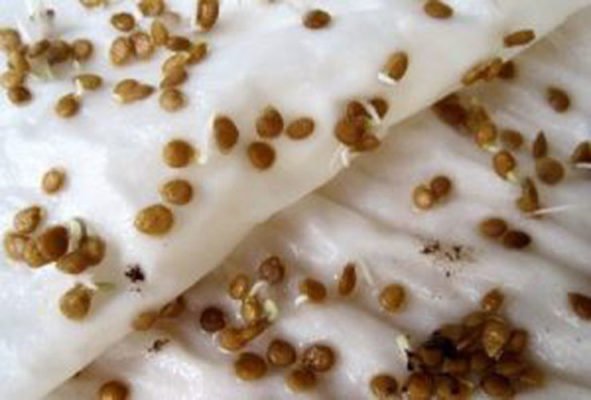
Seed stratification is carried out taking into account the conditions of the region
Reproduction of matthiola: methods and techniques
Annual levkoi reproduce exclusively by seeds, while sowing in open ground or for seedlings in a greenhouse is practiced. The time of flowering of plants depends on the timing of sowing. Distinguish between spring, summer and autumn flowering.
 Mattiola seeds
Mattiola seeds
Sowing seeds in open ground is carried out in the spring, when the ground has already warmed up enough. Seeds are laid out in furrows, sprinkled with earth. It will take three months for the seedling to grow before flowering. If the seedlings are too dense, some of the plants must be removed, using them for transplanting into a free bed.
Advice! The most amazing double flowers come from crooked, twisted seeds. Do not rush to discard seeds of an irregular shape, you can lose lush flowers.
Sowing late varieties makes sense to carry out in a greenhouse for seedlings.
Seed planting
Propagated by levka from seeds by direct sowing in open ground or through seedlings. They can be planted in summer, autumn and winter.
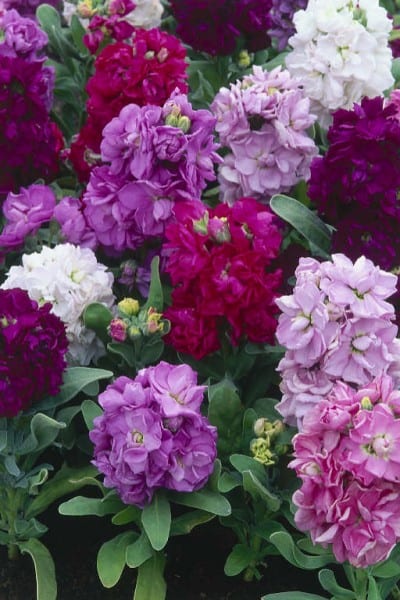
Seedling growing
In conditions of the middle lane, of course, it is better to use this breeding method. In order for the plant to bloom as early as possible, I prefer to cultivate it through seedlings. This is also more reliable - if for some reason the seeds do not sprout, you can plant others a little later, or directly into the ground.
So, the timing of planting at home is the end of February or March, you can shift the date two weeks later. On light, warm windowsills, in heated greenhouses, feel free to plant seedlings in February to get early spring flowering.
- I soak, disinfect the seeds in a weak solution of potassium permanganate for 10-20 minutes;
- I wash it and put it in a loose cloth (gauze, bandage), which I put in a small amount of water for several hours;
- After that, I harden the seeds on the bottom shelf of the refrigerator for a couple of hours;
- I fill the containers (there are holes at the bottom) with loose earth, it should contain sand, leafy and sod soil, or purchased soil, which will be best;
- I moisten the surface and spread the seeds (distance 1-3 cm), sprinkle with earth;
- I always cover any seedlings with foil so that they germinate faster, the same is here;
- I put it on a warm windowsill, where there is a lot of light, periodically ventilate and moisturize the plantings;
- When shoots appear (after 5-15 days), we remove the shelter.
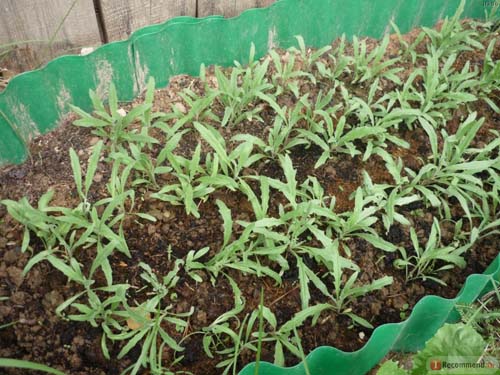
When the seedlings sprout evenly, form two or more true leaves, we dive them into separate cups. I pre-water the seedlings, and then quickly place the seedlings in a new container, trying to disturb the core root less. I press the earth around the stem and water it with water.
Before planting seedlings in open ground, I harden the seedlings, taking them out to the veranda in the daytime. I do this 2 weeks before street work.
The best days for planting are selected based on climatic conditions. The end of May or the beginning of June is the optimal time. These flowers can withstand a slight cold snap, but it is advisable to cover small seedlings with cut-off plastic bottles.

Once I planted levkoi where radishes and radishes used to grow, without taking care of the prevention of cruciferous flea infestations. Imagine my disappointment, because I lost all the seedlings, they simply ate it.
Levkoi belong to the cruciferous family, they are affected by diseases of this group of plants, be careful!
The soil under the levkoi should be light, with the introduction of humus and wood ash. Large amounts of nitrogen (fresh manure) are contraindicated. I dig up the soil a couple of days before planting the seedlings. I level it and leave it to settle.
The planting scheme is determined depending on the height of the variety. I plant low-growing species at a distance of 10-15 centimeters, the highest - 30-35 centimeters. I can plant more often, as I like them to grow densely and not fall apart.

We plant with seeds in open ground
When I have prepared a lot of seeds (both my own and purchased), I also plant by direct sowing.
I choose open, sunny places on the site and dig it up with the addition of ash, humus or compost. My levkoi grow well on an elevated bed, where water does not stagnate, but seeps through a moisture-permeable layer.
In order for the levkoy to bloom in July and August, I sow in April. This will harden the seeds, there will be no need to replant them, respectively, they will germinate and bloom without stress. In the beds I make shallow grooves, water them and place the seeds, sprinkle them and cover them with foil or garden material.
Shoots appear in a few days (4-10), then I remove the film cover. I plant immediately at the required distance or even more often, I am afraid that all the seeds will sprout.
Which variety of levkoy to choose for planting
It is not necessary to know all the nuances of the classification
When choosing seeds, you must carefully read the description of the variety, paying attention to the following parameters:
- plant height;
- the size and shape of the inflorescence;
- flower size;
- flowering time;
- shelf life.
Popular varieties with photos
Mammut Excelsior variety (Mammut is the most excellent).
It belongs to the group of single-stemmed varieties, usually reaches a height of 70-80 cm, forms a long dense inflorescence on a powerful stem, consisting of double flowers up to 5 cm in diameter. It has many shades: red, yellow, white, apricot. Good for cutting. Tall varieties: Fox (pink), Step (red), Excelsior (different shades), Miracle.
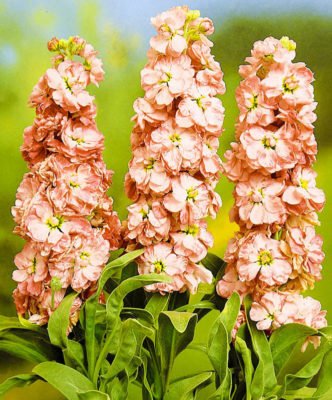
Variety Thumbelina.
Refers to dwarf varieties. Plant height no more than 30 cm. Dense pyramidal inflorescences consist of large double flowers. Shades from white to dark purple. Beautiful in a flower bed, due to its compactness, it feels great in pots. Dwarf varieties: Gnome (different colors), Sun bunny (yellow), Lapis lazuli (blue), Ten Vic (different colors), Intuition (20 cm high).
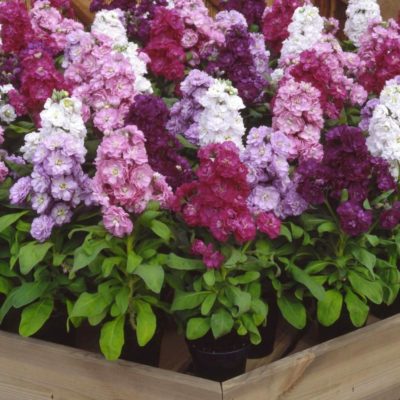
Thumbelina, mix of shades
Variety Ten Vic.
Has lush inflorescences of densely double flowers. Height - 30 cm.
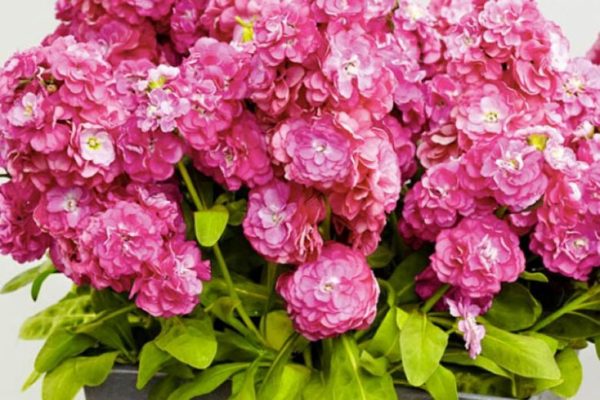
Ten Vic pink
Snowflake variety.
It has racemose inflorescences and large snow-white flowers. Its height is no more than 25 cm.
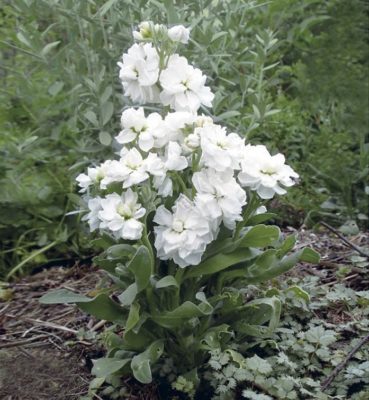
Shrub varieties (different shades).
The bush form of a flower bush is suitable for flower beds. Plants are highly branched, inflorescences are loose, flowers are very large (up to 5 cm). It looks like a blooming cloud.
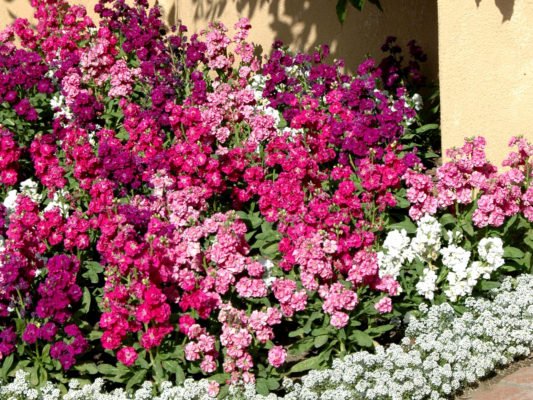
Shrub, mix of shades
Varieties Bouquet and Victoria.
They form a group of bouquet levkoi, which are characterized by an equal-level arrangement of the main inflorescence and lateral ones.
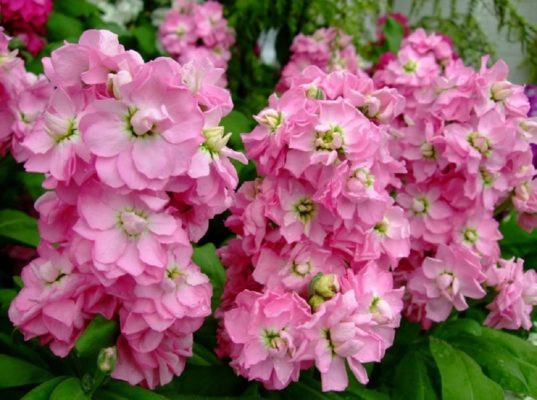
Levkoy gray-haired.
Garden group of varieties with a height of about 60 cm, pyramidal inflorescences, various shades. Varieties: Gray-haired giant.
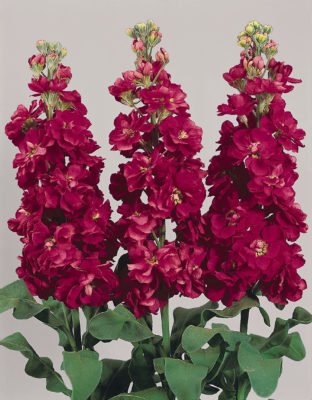
Grizzled giant purple
Variety Aida.
It has a bush height of about 50 cm, large double flowers of delicate colors, collected in racemose inflorescences. They form very beautiful borders.

A close relative of Levkoy is Mattiola Bicornus, also known as Night Violet. This flower is invisible during the day, but at dusk, like little stars, they open up and exude a wonderful aroma. Since mattiola is much closer to the wild, it is much more resilient. It can be sown directly into the ground in early spring and even before winter near those places where people spend time in the evening.
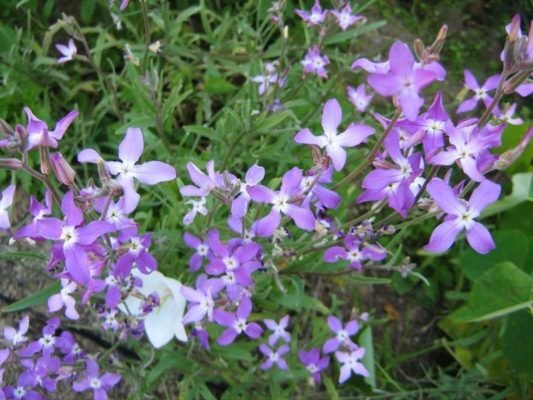
7 Pest and disease control
The night violet does not often suffer from diseases and is almost not subject to spoilage from pests. But you need to insure against possible situations. Having studied in advance the diseases that can overtake the nocturnal, you can timely save it from infection:
- 1. Root rot. This disease can occur with excessive soil moisture. As soon as the leaves become visible, which are affected by the disease, they must be immediately removed. To heal the plant, you need to dry the soil as quickly as possible, and in the future, try not to flood the violet when watering. Measures must be taken immediately, otherwise the flower may die.
- 2. Keela. It is a root disease that affects most varieties of the Cruciferous family. If a flower is infected with this disease, then it will die, no cure has been found. A diseased plant should be immediately burned, and the soil should be treated with a weak manganese solution mixed with crushed lime.
- 3. Cruciferous flea. Pests leave behind small holes in the leaves. It is not difficult to treat a flea - it is enough to scatter pounded wood ash abundantly throughout the plant and soil.
Reproduction
Matthiola can only be propagated by seeds. Vegetative methods are unacceptable for her.
When collecting seeds, take into account that double flowers are sterile. To grow their levkoi with fluffy flower corollas, a careful selection of available seeds is carried out: those grains whose shape is far from ideal, deformed, asymmetric, in 90% of cases reproduce plants with multiple petals.
In order to get seeds from simple night violets, from which terry forms will grow, they are planted in places unfavorable for growth: with poor lighting, in the wind, on poor rocky soil.It is such specimens, constantly fighting for existence, that give terry offspring.
Terry Levkoy
Mattiola two-horned description and characteristics
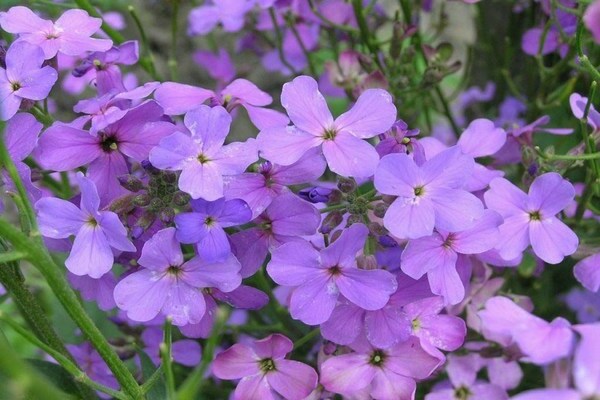
Mattiola two-horned is planted annually, as it is ready to please no more than a year. This flower is unusual and differs in many characteristics. Features include:
Mattiola has a straight or spreading stem, this fact depends on which variety it belongs to. A large number of shoots with a dense fluff, like foliage, are scattered along the flower;
If you properly care for a flower, then it is capable of reaching 60 centimeters in height;
The bright green leaves are covered with large teeth;
Small and not too bright shades of flowers are collected in inflorescences, the shape of which resembles graceful brushes;
Flowers open after sunset and fill the whole garden with a pleasant aroma, flowers close with sunrise;
Matthiola blooms for a long time. It can last from the first summer days and end only when frosts come;
Ripening of small seeds takes place in the pods. Seeds can be stored for 3 years while maintaining good germination.





